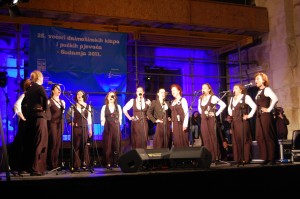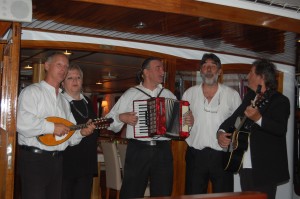I have written previously about the Niles Canyon Ghost, who supposedly has appeared on Niles Canyon Road every February 26 since 1938 (or 1940), trying to hitchhike to San Francisco. The couple who stop to pick her up proceed to the Dumbarton Bridge Toll and pay for three people (before 1951, the bridge toll was based on how many were in the car), but the tolltaker says they’ve paid for too many: the woman has vanished from the back seat. Those who continue onto the address in San Francisco meet a sad woman who says that the same thing happens every year. The ghost is the spirit of her daughter, who was killed in an accident on Niles Canyon Road, and on the mantel is a photograph of the woman who flagged them down.
This story is now known to be one of many variants of the “Vanishing Hitchhiker,” a common urban legend that was first researched in 1942 by American folklorists Richard Beardsley and Rosalie Hankey.
As a teenager, I had first read about the Ghost in The History of Washington Township—indeed, that was usually the reason I opened the book. But I also enjoyed studying the old maps on the endpapers, trying to figure out where our modern-day suburban house would be. The story of the Ghost appears in the 1950 second edition, but not in the scarce 1904 first edition. I very much doubted that the compilers of the History invented the story. Where did it come from? One day, I thought, I would research this and find the truth—but others have beaten me to it (A Place Called Sunol, by Connei DeGrange and Allen DeGrange, DeGrange Publishing, 1995, pp115-116). The first detective work was done by Tri-Valley Herald reporter Liam Pleven in 1991 (Tri-Valley Herald, 26 February 1991), with further sleuthing by Victoria Christian (Around Sunol, 26 February 2007). The true story of the Niles Canyon Ghost can now be told.
The story was probably invented about 1942 by a local journalist as a ploy to sell newspapers. Nothing much happened for the next few years, but in 1947 radio announcer Mel Ventner repeated the story and it began to capture the public’s attention. On 24 February 1950, an article about the Ghost appeared in the Township Register. Two days later on the 26th, many drivers reported seeing a white figure waving from a railroad trestle: it was 19-year-old Clarence Chivers wearing a white sheet. Alameda Country sheriff’s deputies William R. Rose and E. B. Pavon responded and fired warning shots, then proceeded to arrest him. The next day, one newspaper led with the headline “Shivers Shakes as Sheriff Shoots” (although my headline would have been “Chivers Shivers as Sherriff Shoots”). In 1952, officers arrested a 22-year-old for a similar prank, and reported that twenty or thirty kids were hiding along the roadway. Clarence Chivers passed away in 2007 at the age of 75.
It’s no surprise, then, that the 1950 edition of The History of Washington Township, published during the heyday of the Niles Canyon Ghost, would include the story. Tonight raise your glass to the memory of the Ghost, invented on this day about 68 years ago.
Update: In October 2021, almost ten years after I posted this, I received an email from Mike Chivers, nephew of the late Clarence Chivers. Mike confirmed that his uncle Clarence did indeed stage the legendary prank, and often recounted it to family members over the years. Mike also reports another interesting angle: Deputy W. R. Rose, who arrested Chivers in 1950, was the son of another Sheriff William Rose who responded to a carriage crash in Niles Canyon in the late 19th century. Rose found the overturned carriage and a drowned horse, but no human remains were ever recovered.




